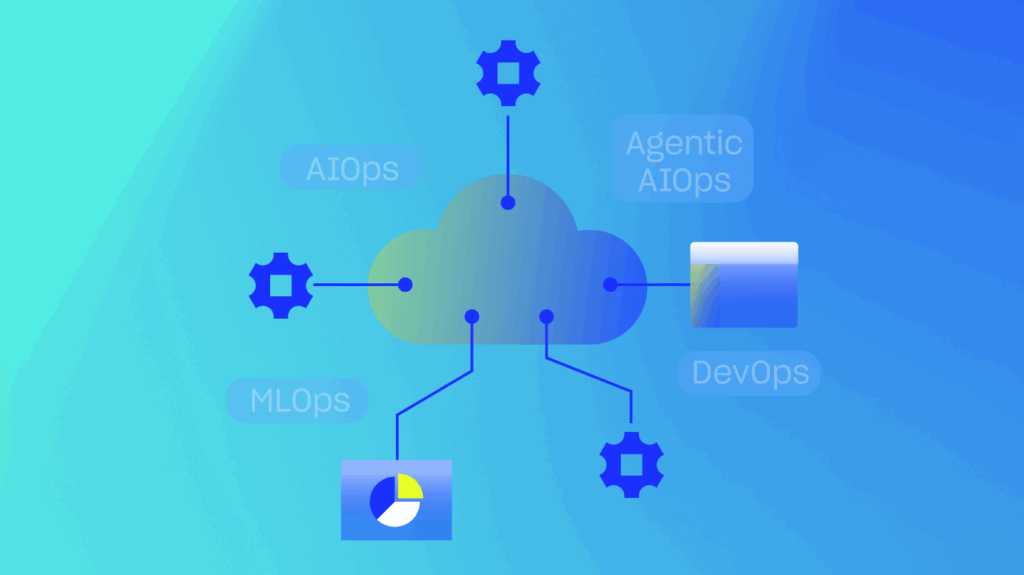Since it was developed in the 1980s, the IT Infrastructure Library (ITIL) has been maintained by Britain’s Office of Government Commerce (OGC). The ITIL framework is considered to set the standards for IT service delivery. The latest version is explained in a series of five books, each one focusing on different processes and stages.
The ITIL’s systematic approach to service delivery and management has proved invaluable for businesses. The framework covers managing security risks, establishing cost-effective IT practices, and building a stable IT infrastructure. The outcome is that businesses can better operate, pivot, and scale. Of course, the ITIL framework is far from unchanging. The CCTA publishes revisions to the framework to reflect new best practices and emerging challenges.
The most recent revision to the ITIL framework comes in ITIL v4. With its release, ITIL v3 was officially retired on January 1, 2022. Now that we’re on to a new version, diving into some notable changes is essential.
Contents
- Why Is ITIL Important?
- What Is ITIL v4?
- What Are the Biggest Changes from ITIL v3 to ITIL v4?
- How to Implement ITIL v4
- Next Steps for Improving Your IT Operations
Why Is ITIL Important?
If you’re not familiar with how the ITIL framework was first developed, it is held in high regard. Wide-scale research and professional input have guided its creation since the first edition. For instance, IBM says that its series, “A Management System for Information Systems” (AKA the “Yellow Books”), greatly informed the original series. Countless other tech giants, innovators, and thought leaders have also contributed to the ITIL revisions through the years.
When the British government initially established the ITIL, the goal was never to create something proprietary or commercialized. Instead, they sought to assemble best practices and create guiding principles for its own use. Without standardized procedures in place, Britain’s government was facing rising costs, inefficiencies, and frequent errors. As such, ITIL was created out of necessity as Britain recognized that its own IT operations required vast improvement.
Yet, instead of keeping the ITIL internal, the government decided to distribute these best practices to benefit public and private organizations globally. The credibility of the ITIL rapidly grew in the years to come. At the turn of the century, when almost every business was starting to get online and needed help with IT, it became widely known. In 2005, the ITIL even played a major role in the creation of the ISO/IEC 20000 Service Management standard, which was the first set of international standards for IT services.
The recent release of v4 demonstrates that the ITIL framework continues to hold great importance in developing IT processes and practices around the world.
What Is ITIL v4?
When the ITIL was first released, it consisted of 30 different books. The massive volume was condensed into seven books when ITIL v2 launched in 2000. Later, the series was reduced to five books with the release of ITIL v3 in 2007. Aside from a relatively small update in 2011, the framework remained unchanged until ITIL v4 was released in 2019.
The latest version focuses on key areas, such as process automation, service delivery, and integration. However, the most significant changes to ITIL v4 focused on accommodating emerging technology. With major changes, the most recent version is more customizable than ever before, making it suitable for any modern business.
A shift towards collaborative and integrated IT, along with guidance on breaking down siloes and increasing flexibility, shows that ITIL v4 is ahead of the times. Even the largest companies that are shifting towards DevOps and the agile methodology will gain tremendous value from the ITIL v4 framework.
In addition to best practices and approaches, the latest version also details nine principles of successful IT service management. These principles include delivering value, designing around experiences, prioritizing transparency, improving collaboration, and simplifying infrastructure and processes, particularly through automation.
What Are the Biggest Changes from ITIL v3 to ITIL v4?
Are you familiar with ITIL v3 and wondering how ITIL v4 has improved? Or, are you considering implementing the framework but unsure that it’s keeping up with modern points of focus? Here’s a look at the biggest differences in the newest version.
Processes to Practices
A key focus when ITIL v3 was overhauled into ITIL v4 was creating a more flexible, agile, and holistic framework. The goal was to make it effectively customizable to fit any modern business. In an attempt to be more holistic in nature, ITIL v4 explores the likes of communication, collaboration, and integration. It also relates to remote work and the present-day challenge of breaking down siloes.
As part of this shift towards a more holistic approach, ITIL v4 has changed from processes to practices. The change is to move away from the more limiting perspective of a process. Processes imply a fairly inflexible “1-2-3” progression. Meanwhile, “practices” are defined as resources used to accomplish an objective.
While a process may be part of a practice, practices are arguably more comprehensive and widely applicable. In total, ITIL v4 speaks about 34 practices in all that cover the likes of teams, technology, information, and suppliers.
Service Lifecycle Removed
When ITIL v3 was released in 2007, one of its most significant introductions was the idea of the “Service Lifecycle.” This lifecycle consisted of five stages in total. Each stage guided businesses through a set of questions that helped them understand the user’s needs, the goal of the project, and the best way to deliver it.
The first four stages were Service Strategy, Service Design, Service Transition, and Service Operations. The fifth and final stage was dubbed Continual Service Improvement. In ITIL v4, the concept of Continual Service Improvement is the only stage that remains. It’s also relatively unchanged from the prior version.
In ITIL v4, the focus on Continual Service Improvement (CSI) involved adapting to customers’ ever-evolving needs. This is partly done by incorporating customer feedback. However, the CSI does not exist alone. To replace the other four stages of the Service Lifecycle, ITIL v4 introduces the Service Value System (SVS) and the Service Value Chain (SVC).
The SVS helps organizations recognize the forces that either help or hinder service delivery. Meanwhile, the SVC helps provide insight into the internal processes, practices, and workflows that lead to progress. These both work together with CSI. These components aim to improve organizational visibility and foster process improvement at scale.
On paper, this change may sound like a matter of semantics. However, once you explore the framework in-depth, you’ll better understand its implications.
Updates to Integrating ITIL With Other Functions
The ITIL framework has long been idolized by IT professionals. But, what role does it play outside of the IT department? Another major shift in the most recent version of ITIL is increased focus on integration.
The most effective IT teams now regularly collaborate with and support every department across a business. They provide and maintain software for communication, data sharing, and other crucial activities — implementing business intelligence (BI) workflows and workflow automation. As a result, the walls around the IT department are continuing to break down.
With this in mind, ITIL v4 discusses how businesses should take ITIL and apply it across the organization. As part of this initiative, a variety of certifications exist. There are even options suitable for professionals not working within the IT department.
Professionals who hold a management position are bound to benefit from understanding the ITIL framework. So are any individuals who oversee IT projects, software, and processes. While not everyone needs to be certified, understanding where it can be beneficial will help your company achieve consistency.
How to Implement ITIL v4
The most challenging part of implementing the ITIL framework is that it’s not a simple step-by-step process. Even if you read all five books, you still need to digest the information and figure out the best way to apply it to your company. Rather than going page by page, you’re better off getting a thorough overview of the framework.
In truth, effective understanding and implementation of the ITIL framework requires help from an expert. That means bringing in a consultant who is certified in the framework. Alternatively, you can support your IT staff in achieving certification themselves. However, before you go down that path, it’s essential that you don’t start blindly.
Adopting ITIL v4 is only beneficial when guided by your company’s unique use cases, challenges, and objectives. Those who dive into the framework without thinking about it in the context of their business are sure to miss the most important points. So, if you’re interested in implementing ITIL v4 into your business, start by asking yourself why.
Questions like these can help you start thinking about your challenges and goals:
- What is your most urgent IT issue? Many companies today are struggling to upgrade from legacy applications or experiencing data siloes as they move to cloud services.
- What are you trying to improve? Common goals center around efficiency, cost, collaboration, communication, and visibility.
- What is your budget and timeline? While you may learn that it isn’t realistic, determining this up-front can help you prioritize the right activities.
- What resources do you have at your disposal? Consider the knowledge and availability of your IT staff, developers, and external consultants.
Once you have answered these basic questions, you will be better positioned to consider your readiness for exploring the ITIL v4 framework. If you have the budget, it could be worthwhile to encourage some of your staff to pursue certifications. This way, they can effectively apply the best practices throughout your organization, both inside and outside IT.
Of all the certifications that are available, the ITIL Managing Professional (MP) is perhaps the most valuable and widely applicable. First, you must start with the ITIL v4 Foundation certification because it is a prerequisite to start on the modules for the MP certification. The MP certification is particularly valuable for staff outside of the IT department. With this certification, professionals will learn how to run IT projects, teams, and workflows effectively. Plus, they will align practices with the ITIL v4 framework and with your company’s own policies and goals.
Next Steps for Improving Your IT Operations
The ITIL v4 framework provides excellent guidance for companies, but only if they approach it from a problem-solving mindset. If you are an IT or management professional, pursuing ITIL certification can prove invaluable. After all, it allows you to apply the best practices and processes effectively within the unique context of a given company.
ITIL v4 is worth looking at for businesses that are interested in improving IT operations. However, it’s important to understand that it is not a step-by-step process. To use ITIL to improve your operations, you must know how to implement the information properly. This means taking a unique approach to your company’s challenges and goals.
The ITIL framework is by no means a required component of an efficient IT department. However, it can help shortcut a variety of modern problems. Businesses can use it to future-proof operations and take a long-term outlook. However, companies may need to call on external partners and consultants experienced with ITIL to improve their operations.
Overall, ITIL v4 serves the exact purpose the British Cabinet Office set out to achieve in the 1980s. With input from the world’s thought leaders in IT and software, ITIL v4 continues to be a mainstay. Professionals and companies seeking additional guidance on architecting and managing cost-effective, productive, and capable infrastructure will find it useful.
Subscribe to our blog
Get articles like this delivered straight to your inbox







